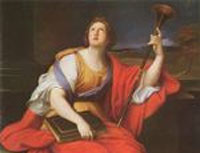|
||||||||||||||||||||||||||||||||||||||||||||||||
| Performing Gender - ARTS2901 | ||||||||||||||||||||||||||||||||||||||||||||||||

Description
Subject Areas: Women's and Gender Studies Module : "Frida Kahlo: Performing Passion and Pain" (Semester 1, 2010) Frida Kahlo has become an icon of contemporary art and feminism. This course examines her life and artistic production, and seeks to account for her status in Mexican and Latin American circles as well as in a broad international context. It emphasizes the self-consciously theatrical ways in which Kahlo’s work projects particular versions of the following general themes: ethnicity and "Mexicanness"; gender and sexuality; public and private selves; the body fragmented and in pain; and radical leftwing politics. In addition to discussing several dozen of Kahlo’s paintings, we also examine two feature films: Frida: Naturaleza viva (1984) directed by Paul Leduc, and the Hollywood production Frida (2002) directed by Julie Taymor. The course starts with an overview of Mexican muralism and the role of art in post-revolutionary Mexico and concludes with an examination of the works of Kahlo’s contemporaries: María Izquierdo, Remedios Varo, and Leonora Carrington, all of whom painted in the shadow of male dominated Muralism. Module: "Dressed to Kill: Dress and Identity in History" This course will focus on the many meanings of dress from daily attire, national dress, and religious costume, to high fashion across a wide gamut of cultures. Specific topics include gender and identity, inventing national dress, deportment, dress as concealment and adornment, shaping the body (such as footbinding and the corset), haute couture, and the politics of dress. The relationships between concealment and etiquette, cloth holiness and magic, dress and undress, and the manipulation of costume for political agendas will also be explored. Case studies will be taken from world history, particularly Europe, Asia and Latin America, over the last four hundred years. |
||||||||||||||||||||||||||||||||||||||||||||||||


